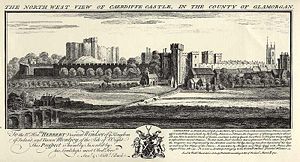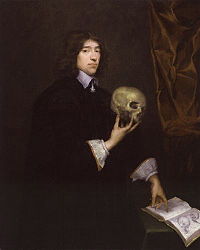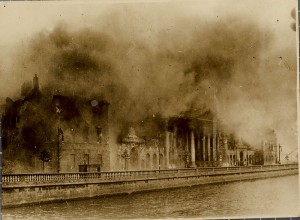History has been likened to dropping a bucket over the side of a ship, attached to a long chain. What comes up is a microcosm of life deep below the waves. So it is with an historical source. It offers a tiny little glimpse – a snapshot in time – of one particular event, or one person. On its own, though, it doesn’t give us a full picture. It is a frustrating fact but many people, in fact the majority of people, left little or no trace in the historical record. Even when one or two documents survive, it is often difficult to get much more than bare facts. Does this mean, though, that we shouldn’t bother even trying to piece together the lives of people in the past?

Our project is a study of medical practitioners in the early modern period. In fact, it is the largest concentrated study of practitioners probably yet undertaken in Britain. The aim is to try and identify all those engaged in the practice of medicine in England, Wales, Ireland and (later) Scotland between roughly 1550 and 1715. It is a massive undertaking. Who, for example, will be included? The list is enormous. Physicians, apothecaries, surgeons, barbers, barber-surgeons, chirurgeons, chymists, druggists, surgeon-apothecaries, cunning folk, medical entrepreneurs and quacks…and all points in between. Dr Peter Elmer, formerly of the Open University and now a senior research fellow at Exeter has already collected over 12,000 names, many with individual biographies. I’ve been charged with finding Welsh practitioners and, after eight months, the list already stands at more than 600 – and this for a country that reputedly had very few doctors. You can keep up with progress on the project at our website here: http://practitioners.exeter.ac.uk/
How are these people being located? The majority of my work is done in archives and on online catalogues. At the moment it is the sheer number of practitioners coming to light that is most surprising. They were, quite literally, everywhere. The problem lies in the deficiency of records and their limitations in offering much more than a glimpse of an individual’s life. Parish registers, for example, are often the only record that someone ever existed. In some cases, they might contain occupational data, and this begins to give some context. The Montgomeryshire parish registers are a useful case in point, with around 60 references to medical practitioners between the dates noted above.

(Image of North Devon Parish registers: Copyright Devon County Council)
Amongst the Montgomeryshire names are men like Arthur Jones of Berriew, a barber who died in 1697, Richard Evans of Brithdir “Physition” who died in 1701 and John Humphreys of Llanfechain, “chirurgeon” who died in 1660. Given that occupational data in parish registers is relatively rare, it seems fair to assume that recorded occupations suggest that these were the primary occupations of the people concerned. In each case, however, these are the only references to each man that I can find. No further evidence of their practice, their social status or indeed their lives, can be firmly established. At the very least though, and when aggregated, even this bare data does begin to allow us to see something of the landscape of medical practice in a given area. In Montgomeryshire, for example, is a rare reference to the occupation of midwife – one Catherine Edward of Glynceiriog, who died and was buried in April 1688. Midwives seldom appear in the historical record in Wales, so even brief references are interesting.
In other cases, though, it is possible to build up a broader picture of an individual practitioner’s life. The baptisms of children give both an indication of family formation as well as placing a person within a given area for a fixed number of years. Richard Ellis, for example, was a barber in Newtown, now in Powys. No record can be found for his birth or death, but the baptisms of his children William, Sarah and George between 1732 and 1737, in each of which he was referred to as a barber, tell us that he was at least practising between those dates. Also, it might be inferred (although by no means certain) that this was at the earlier end of his career given that children tended to be associated with marriage and the establishment of a household. The Newtown apothecary Thomas Kitchen provides a similar example, with the baptisms of his children Edward, Eusebius and Margaret between 1733 and 1737. Whilst we can’t tell anything about his business from this, we can at least fix him both geographically and temporally.
Other types of sources can unwittingly provide testimony to the businesses and social networks of medical practitioners. Wills and probate inventories can certainly be revealing about shop contents but, by looking further at things like the names of benefactors and even the signatories to wills it is possible to discern networks. In early-modern Wrexham, for example, a cluster of seventeenth-century wills reveal close links between practitioners in the same town, suggested by debts but also by their acting as executors or appraisers for colleagues. In some cases, for example that of Godfrey Green of Llanbeblig, died 1699, his entire shop and business found its way into the possession of another apothecary, John Reynolds, where it was still described as being the shop goods formerly of Godfrey Green when Reynolds himself died in 1716.

(Image of Cardiff from the North West: Used under creative commons licence, Wikipedia)
The best evidence can often be found where a picture can be built up using a variety of different documents. I’m currently working on an article about medical practitioners in early-modern Cardiff and especially their role within the early modern urban environment. Town records are generally better than for rural areas, but it is interesting to note the depth to which medical practitioners were often involved in town business. One Edward Want of Cardiff, an “barber-chirurgeon”, appears variously in documents in the second half of the seventeenth century. From parish registers we have his dates of birth and death, as well as the fact that he took over his business from his father of the same name. From hearth tax records we can tell that he was based in the affluent West Street area of the town, while a 1666 town survey further reveals that he was charged 6d half a burgage in that area – the small plot probably indicating a shop. At some point he had occupied a mansion house near the corn market, a fact attested to by a land lease document, further suggesting wealth and status. References in the wills of two other Cardiff traders indeed refer to him as an Alderman, and Cardiff borough records also list him as a juror. We can also tell that his son Sierra Want was apprenticed to a Bristol barber surgeon, a common practice for the sons of middling-sort South Walians. Whilst his will contains nothing of his medical practice, the use of a variety of documents can help us build up a real picture of the commercial and personal life of Edward Want.
In pulling the bucket up from the depths it is often difficult to glean much more than the barest facts; we often need more to really start to close in on the lives of our early-modern forebears. With practice, a little ingenuity and a great deal of luck though, even the smallest of extra facts help us to piece together a picture not just of how many people were practising medicine in Britain, and perhaps especially in rural Britain where records are fewer, but also something of their lives, occupations and statuses within their communities.
Alun Withey
(This post has appeared in an altered form on DrAlun.wordpress.com – apologies for cross-posting.)





